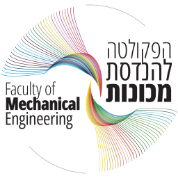Nanotopography and the mechanical properties of the cellular environment are key regulators of cell behavior, however the mechanisms by which these physical cues influence cell function are not yet fully understood. In this talk, I will present my group’s interdisciplinary research that integrates microfabrication, materials engineering, and mechanobiology to advance our understanding of how micro- and nanoscale features in the cell microenvironment influence nanoscale cellular organization.
We have engineered a novel class of nanopatterned extracellular matrix (ECM) constructs compatible with cryo-electron tomography (cryo-ET), a high-resolution transmission electron microscopy (TEM) modality for imaging frozen hydrated cells in 3D. Using electrospinning, we deposited gelatin fibers, hundreds of nanometers in diameter, directly onto TEM supports, tuning fiber alignment to mimic either healthy (aligned) or pathological (disorganized) ECM. The fibers were cross-linked for aqueous stability and shown to support cell culture while influencing cellular organization. Importantly, these substrates were fully compatible with plunge freezing and enabled nanoscale imaging of intact cell interiors by cryo-ET. We are now leveraging this platform to investigate how distinct nanotopographies affect the subcellular organization of endothelial cells and their junctions.
In parallel, we have developed a batch-fabrication process for manufacturing biocompatible gold TEM grids, using 4’’ sacrificial silica wafers, photolithography, lift-off, electroplating, and wet etching. This cleanroom-based method yields ~600 gold grids per wafer with performance that matches or exceeds commercial alternatives, offering cost efficiency and design flexibility in the patterning of the supportive mesh and foil. Our second-generation gold grids will incorporate an anisotropic porous gold foil to promote cell elongation and guide cell orientation.
Together, these efforts establish a versatile toolkit for studying the structure–function relationship of cells within precisely engineered microenvironments. By bridging materials science and structural biology, our approach enables high-resolution visualization of how physical cues regulate cellular nanoarchitecture, paving the way for new discoveries in mechanobiology, disease modeling, and tissue engineering.






